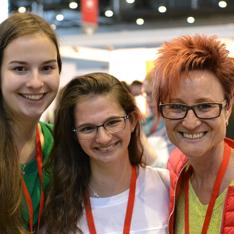Kuruppu A1
1International Institute of Health Sciences, Department of Physiotherapy, Welisara, Sri Lanka
Background: Tailoring industry is a vast scale industry employed by a large number of Sri Lankans. Basically foot is known as weight bearing agent in our whole body so that body mass passes through the foot. Therefore for the stretching function for weight bearing is done by calf muscle which contains soleus and gastrocnemius. For this study calf muscle tightness and associated restricted dorsiflexion were highly concerned. Because this service sector is mainly targeted for work related musculoskeletal injuries as in these workers are engaged in sewing process half of the day. Therefore occurrences of such injuries are prominent.
Purpose: The objective was to find out the prevalence of calf muscle tightness associated with ankle range of motion of sewing machine operators.
Methods: The calf muscle tightness and range of motion were assessed by a knee to wall test. To perform the test the worker should be barefoot and kneeling with the tested leg in front. The 1st toe should be 10cm away from the wall depending on their height. The worker then shifts their knee forward, trying to touch the wall with the knee while keeping the heel flat on the floor. If the knee cap touches the wall, it stated that the worker has sufficient dorsiflexion mobility. If not dorsiflexion is restricted. Mixed method was performed on 110 conveniently selected sewing machine operators in a textile factory in Kurunegala district. Operators were assessed through an interviewer-administered questionnaire.
Results: Statistically analysed data using SPSS revealed that among participants 83.6% used their right leg as their dominant leg to operate the sewing machine. The workers who used their right leg to operate the machine obtained a knee to wall test average mean value of 20.53cm for their right leg and 21.02cm for their left leg. Respectively, the workers who used their left leg to operate the machine were 21.31cm for their right leg and 22.14cm for their left leg. Drastically the findings showed that only 20 people who worked there for 7-9 hours had ankle pain and 51 workers who worked there for more than 10 hours had not experienced ankle pain.
Conclusion(s): The results show that they do not have statistically a significant difference in their calf tightness regardless of the dominant leg of machine operation (P=0.5).
Implications: On recommending, conducting a seminar regarding their issues and increase the awareness of physiotherapy is highly recommended as well as relevant authorities should make them aware about the importance of stretching and relaxation. Also educating sewing machine operators on the use of moist heat to relieve pain and finally establishment of ergonomic changes within the work place are concerned mostly.
Keywords: Calf muscle, Range of Motion, Sewing Machine Operators
Funding acknowledgements: CEO/Founder of IIHS Dr. Kithsiri Edirisinghe, lecturer Mr. Nipun A. Jayakody at IIHS.
Purpose: The objective was to find out the prevalence of calf muscle tightness associated with ankle range of motion of sewing machine operators.
Methods: The calf muscle tightness and range of motion were assessed by a knee to wall test. To perform the test the worker should be barefoot and kneeling with the tested leg in front. The 1st toe should be 10cm away from the wall depending on their height. The worker then shifts their knee forward, trying to touch the wall with the knee while keeping the heel flat on the floor. If the knee cap touches the wall, it stated that the worker has sufficient dorsiflexion mobility. If not dorsiflexion is restricted. Mixed method was performed on 110 conveniently selected sewing machine operators in a textile factory in Kurunegala district. Operators were assessed through an interviewer-administered questionnaire.
Results: Statistically analysed data using SPSS revealed that among participants 83.6% used their right leg as their dominant leg to operate the sewing machine. The workers who used their right leg to operate the machine obtained a knee to wall test average mean value of 20.53cm for their right leg and 21.02cm for their left leg. Respectively, the workers who used their left leg to operate the machine were 21.31cm for their right leg and 22.14cm for their left leg. Drastically the findings showed that only 20 people who worked there for 7-9 hours had ankle pain and 51 workers who worked there for more than 10 hours had not experienced ankle pain.
Conclusion(s): The results show that they do not have statistically a significant difference in their calf tightness regardless of the dominant leg of machine operation (P=0.5).
Implications: On recommending, conducting a seminar regarding their issues and increase the awareness of physiotherapy is highly recommended as well as relevant authorities should make them aware about the importance of stretching and relaxation. Also educating sewing machine operators on the use of moist heat to relieve pain and finally establishment of ergonomic changes within the work place are concerned mostly.
Keywords: Calf muscle, Range of Motion, Sewing Machine Operators
Funding acknowledgements: CEO/Founder of IIHS Dr. Kithsiri Edirisinghe, lecturer Mr. Nipun A. Jayakody at IIHS.
Topic: Musculoskeletal: lower limb
Ethics approval required: Yes
Institution: Bio-inquirer ethics review committee
Ethics committee: Bio-inquirer ethics review committee
Ethics number: BI/ERC/186
All authors, affiliations and abstracts have been published as submitted.

